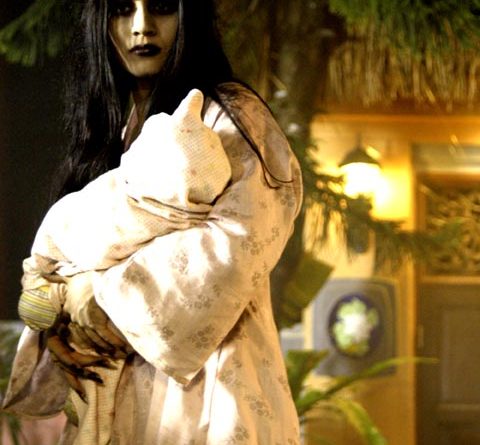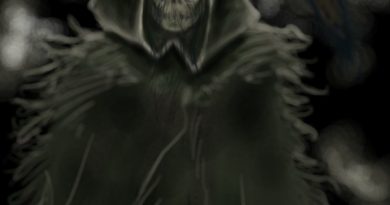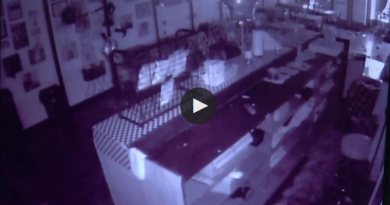The Pontianak (Demon Vampire) Mysteries
The Pontianak, Kuntilanak, Matianak or ‘Boentianak’ (as known in Indonesia, sometimes shortened to just kunti) is a type of vampire in Malay folklore and Indonesian mythology, similar to the Langsuir. Pontianak are women who died during childbirth and became undead, seeking revenge and terrorizing villages. The name ‘pontianak’ is reportedly a corruption of the Indonesian or Malay ‘perempuan mati beranak’, or ‘she who has died in childbirth’
What is Pontianak?
In Malaysia, the creature “Pontianak” is believed to exist in real by certain individual and it is considered a legend by some. The origination of the word “Pontianak” is unknown. In Malay “anak” means child but the word “ponti” is unknown.
It is in general believed that “Pontianak” is the soul of a lady died of child birth. “Pontianak” is basically a female vampire who appears at night. Sometimes she is accompanied by a baby. Normally she is seen at the road side or under a tree. She has long hair. Sometimes she appears young and beautiful to attract male victims. After the victim falls in her trap, she will turn ugly and old with sharp teeth. Attacks would be based on claws, and defense probably on leaping or footwork. She is believed to feed on intestines and blood. “Pontianak” is believed to be attracted by child birth when there is a plenty of blood flowing out from human body. In the olden days, measures are taken by the people to prevent the vampire from coming during child birth. She is believed to be scared of thorns.
The legend
It is said that a woman who dies while she is with child will rise again as a “Pontianak”, a fearsome nocturnal undead being who will bring violent death on anyone she meets. Such a being resides inside the trunk of ancient trees, but will revert to her old human nature if an iron nail is driven into her neck. The nail remains in the woman’s neck until she dies and is buried with it … should the nail ever be removed, she will once again become a Pontianak and embark on a killing spree. Due to the frightening fighting prowess of one of these creatures, few are willing to attempt to tame one. For this reason, it is considered unlucky to strike a woman, especially a married woman.
Appearance
In folklore, a Pontianak usually announces its presence through baby cries or assumes the form of a beautiful lady and frightens or kills those unlucky enough to come too close. It disguises itself as a beautiful young woman mainly to attract its victim (usually male). Its presence can sometimes be detected by a nice floral fragrance identifiable as that of the Plumeria, followed by an awful stench afterward. In his 1977 short story collection The Consuls File Paul Theroux posits that the phantom is an invention of Malay wives who wanted to discourage their husbands from random sexual encounters with women that they met on the road at night.
It is also believed that a Pontianak is very likely to want to target certain female victims (in particular, those who are pregnant or in the childbirth process), and attempt to cause miscarriages as a form of revenge, due to that fact that they may have died as a result of dying during childbirth themselves.
Gauging how far away a Pontianak is by its cries is very tricky. The Malays believe that if the cry is soft, it means that the pontianak is near, and if it is loud, then it must be far. Some believe that if you hear a dog howling, that means that the pontianak is far away. But if a dog is whining, that means the Pontianak or demon-vampires is nearby.
Some also say that mistaking a ‘flash’ of someone passing by may actually be the Pontianak ‘moving’ around. They are often described as a woman having very long black hair covering their faces, and wear a long white dress, while their legs and feet are not visible.
A Pontianak kills its victims by digging into their stomachs with its sharp fingernails and devouring their organs. Pontianaks must feed in this manner in order to survive. In some cases where the Pontianak desires revenge against a male individual, it rips out the sex organs with its hands. It is believed that Pontianaks locate prey by sniffing out clothes left outside to dry. For this reason, some Malays refuse to leave any article of clothing outside of their residences overnight.
Some believe that having a sharp object like a nail helps them fend off potential attacks by Pontianaks, the nail being used to plunge a hole at the back of the Pontianak’s neck. It is believed that this will turn the Pontianak into a beautiful woman, until the nail is pulled off again. The Indonesian twist on this is to plunge the nail into the apex of the head of the kuntilanak.
The Pontianak is associated with banana trees, and its spirit is said to reside in them during the day.
Name sake
Pontianak in Indonesia is named after this creature, which was claimed to have haunted the Sultan who first settled there. It is said that if you have your eyes open when a Pontianak is near, it will suck them out of your head. When this ghost is really angry, she is said to be able to eat a person.
Langsuir
Langsuir is a version of Pontianak, popular in Malaysia as one of the deadliest vampires in Malay folklore. Different from the pontianak, which always appears as a beautiful woman to devour the victim, langsuir possess the victim and suck their blood from the inside, slowly killing them. It is believed that langsuir are women who suffered from laboring sickness (meroyan) and which resulted in the death of both mother and child in childbirth. Such a woman would turn in to a langsuir 40 days after her death. Portrayed as hideous, scary, vengeful and furious, the langsuir is further characterized as having red eyes, sharp claws, long hair, a green or white robe (most of the time), a rotten face with long fangs and the ability to fly. It is also believed that the langsuir has a hole behind its neck which is used to suck blood. If one puts the Langsuir’s hair in this hole or cuts their claws, Langsuir will become human again. To prevent women from turning into langsuir, glass beads are put in the corpses mouth.
Langsuir vs Pontianak in Malay folklore
The Malaysians have a rich mythology involving numerous “demon-vampire” types of all diverse sorts. One of the more prominent Malay vampires is known as the Bajang. The Bajang is generally assumed to be male and takes the form of a huge cat which mews at night. The female of this species is known as the Langsuir, or Langsuyar. There are some variations to the Langsuir tale.
In one version, the Langsuir was a woman of exquisite beauty and charm who, upon hearing the news of her child’s stillbirth, died of shock and became a demon. Women in Malaysia seem to have this particularly horrible tendency to suddenly die of shock and become demon-vampires. Anyway, upon hearing the news, the woman claps her hands and flies off to a tree where she perches. The stillborn child becomes the Pontianak. The Langsuir wears a beautiful robe of green and possesses long, tapering nails and flowing black hair- which conceals a “feeding hole” in the back of her neck, which she uses to suck the blood of young children.
In this version, the Langsuir can be stopped or, more precisely, ‘domesticated.’ To do this, you must catch her, trim her nails and her hair, and then stuff the hair into the hole in the back of her neck. Goodness, it’d be hard enough to catch a normal women and do that, much less one that possesses supernatural powers.
In another telling of the tale, the Langsuir is a woman who has died during childbirth before the ‘forty days of uncleanness have expired’. In this variation, the Langsuir is a demon-witch that shrieks and flies about by waving her arms and opening and closing her hands. To prevent this from happening, immediately after the woman has died, glass beads are placed into the corpse’s mouth, hen’s eggs placed under each armpit, and needles stuck into the palms. This prevents the Langsuir’s ability to shriek and move her arms and hands.
The tendency for one to become a Bajang or Langsuir seems to be somewhat hereditary, as the familiar of each is handed down, heirloom style, from one family member to the next- very similar to the supposed witch-possessions of European lore.
Still another version of the story has the Langsuir depicted as a great owl with giant claws that perches itself in trees or upon rooftops, hooting it’s melancholy tune (similiar to a Banshee).
Pontianak or Langsuir, which is which?
Now, the Pontianak, or Madi-anak,or demon-vampires also has a few variations. As stated before, the popular reference to the Pontianak is as the stillborn child of the Langsuir, and it takes the form of an owl; just as the mother does in the last variation. Other versions have the stillborn corpse shrieking a maddening cry and flapping its arms and flying about. To prevent this, the same procedure with the beads, eggs, and needles must be performed.
Through some misinterpretation, the Pontianak has also taken on the role of the Langsuir that is in the form of a beautiful woman who died in childbirth. The people of Java refer to the Pontianak as the spirit of a dead virgin, who feeds upon unsuspecting suitors with the hole in the back of her neck; unless they are quick and can loose a single strand of her magnificent hair.
In Java and the rest of Indonesia the names of the Languisar and the Pontianak are reversed such that the Pontianak is the mother and the Langsuir is the baby. Here they also are night flying vampires. But on Java the Pontianak also wails at night like a banshee for the loss of her child.
The origin of Pontianak?
Otherwise known as ‘Hantu Kuntilanak among the Indonesians’, there are many stories of the Malay vampire, commonly known to the locals in Malaysia as Pontianak. They have long hair and are usually thought of as females. They kill their victims and then suck their blood. There are, however, different opinions on the origins of this Pontianak.
The most common belief is that the Pontianak is usually the ghost of a woman who died during childbirth, and she returns as a vengeful spirit who hates to see other women have what she couldn’t. So these spirits would seduce men by appearing to them as a beautiful woman, and once they’ve lured the unsuspecting males, will proceed to suck the life out of them. They are also known to turn up at a childbirth and ‘steal’ the new-born baby away. They do steal young women’s life too as it is believed that the latter’s blood will keep them going.
An Indonesian informant said that Hantu Kuntilanak are actually victims of road accidents who had lost a lot of blood in those accidents. Therefore, they transform themselves into bloodsucking ghosts.
Perhaps the only reason they are called vampire is because they suck blood. Otherwise, Pontianaks do not have characteristic of the Western version of vampire. They have more characteristics possessed by ghosts but are much more violent. Hence, in my opinion, the term ‘vampire’ may not be such a suitable term to call them but ‘Pontianak’ should be a more appropriate term.
The Pontianak is the stillborn child of a Langsuir. Langsuir also sucks the blood of living infants and appears in the form of a night owl with long claws. The ways to prevent a stillborn child, whose mother also died at his stillbirth, from becoming a Pontianak match the ways his mother is prevented from becoming a Langsuir demon-vampires.
Source:http://en.wikipedia.org/wiki/Pontianak_%28folklore%29



